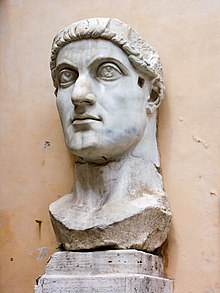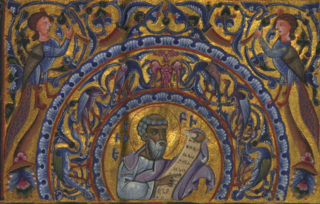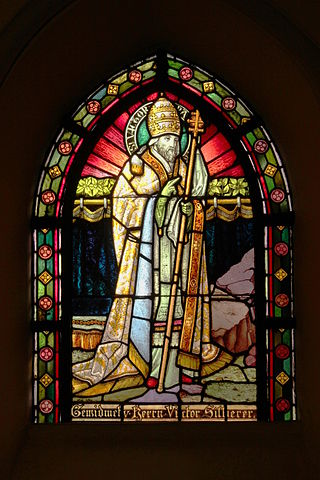
When Constantine the Great came to power in 306, he worked to stop the persecution of Christians in the Roman Empire. However, this led to a large split in the treatment of Christians and Jews.

When Constantine the Great came to power in 306, he worked to stop the persecution of Christians in the Roman Empire. However, this led to a large split in the treatment of Christians and Jews.
Under Constantine the Great, Jewish clergy were given the same exemptions as Christian clergy. [1] Jews living in the Roman Empire were legally obliged to pay the Fiscus Judaicus tax. This tax continued during his reign and some historians credit the emperor Julian with abolishing this in 362. [2]
In 329 AD he issued laws prohibiting Jews to own Christian slaves, prohibited mixed marriages and punished by death conversion of Christians to Judaism. [3]
One of Constantine’s religious laws regarded attempts to stop Jews from converting to Christianity. It was noted that Judaism was “an abominable sect”. [4]
He also began to claim land in Israel for use by the Christian Church. During a visit by his mother in 326 to 327, she identified places where key events may have taken place in Jesus’ life; Constantine went on build churches at those locations. [5]
Constantine supported the separation of the date of Easter from the Jewish Passover (see also Quartodecimanism), stating in his letter after the First Council of Nicaea (which had already decided the matter):
"... it appeared an unworthy thing that in the celebration of this most holy feast we should follow the practice of the Jews, who have impiously defiled their hands with enormous sin, and are, therefore, deservedly afflicted with blindness of soul ... Let us then have nothing in common with the detestable Jewish crowd; for we have received from our Saviour a different way." [6]
According to Mark DelCogliano, “it was not the quartodeciman practice that Constantine sought to eliminate, but rather the so-called 'Protopaschite' practice which calculated the paschal full moon according to the Jewish lunar calendar and not the Julian solar calendar". [7] [8]
Theodoret's Ecclesiastical History records The Epistle of the Emperor Constantine, concerning the matters transacted at the Council, addressed to those Bishops who were not present:
"It was, in the first place, declared improper to follow the custom of the Jews in the celebration of this holy festival, because, their hands having been stained with crime, the minds of these wretched men are necessarily blinded. ... Let us, then, have nothing in common with the Jews, who are our adversaries. ... Let us ... studiously avoiding all contact with that evil way. ... For how can they entertain right views on any point who, after having compassed the death of the Lord, being out of their minds, are guided not by sound reason, but by an unrestrained passion, wherever their innate madness carries them. ... lest your pure minds should appear to share in the customs of a people so utterly depraved. ... Therefore, this irregularity must be corrected, in order that we may no more have any thing in common with those parricides and the murderers of our Lord. ... no single point in common with the perjury of the Jews." [9]

Eusebius of Caesarea, also known as Eusebius Pamphilus, was a Greek, or Palestinian historian of Christianity, exegete, and Christian polemicist. In about AD 314 he became the bishop of Caesarea Maritima in the Roman province of Syria Palaestina. Together with Pamphilus, he was a scholar of the biblical canon and is regarded as one of the most learned Christians during late antiquity. He wrote Demonstrations of the Gospel, Preparations for the Gospel and On Discrepancies between the Gospels, studies of the biblical text. As "Father of Church History", he produced the Ecclesiastical History, On the Life of Pamphilus, the Chronicle and On the Martyrs. He also produced a biographical work on Constantine the Great, the first Christian Roman emperor, who was Augustus between AD 306 and AD 337.

The First Council of Nicaea was a council of Christian bishops convened in the Bithynian city of Nicaea by the Roman Emperor Constantine I. The Council of Nicaea met from May to the end of July 325.

Pope Victor I was a Roman African prelate of the early Christian Church who served as Bishop of Rome in the late second century. The dates of his tenure are uncertain, but one source states he became pope in 189 and gives the year of his death as 199. He was born in the Roman Province of Africa—probably in Leptis Magna. He was later considered a saint. His feast day is celebrated on 28 July as "St Victor I, Pope and Martyr". He was of Berber origin.

Flavia Julia Helena, also known as Helena of Constantinople and in Christianity as Saint Helena, was an Augusta of the Roman Empire and mother of Emperor Constantine the Great. She was born in the lower classes traditionally in the Greek city of Drepanon, Bithynia, in Asia Minor, which was renamed Helenopolis in her honor, although several locations have been proposed for her birthplace and origin.

Melito of Sardis was the bishop of Sardis near Smyrna in western Anatolia, and who held a foremost place among the early Christian bishops in Asia due to his personal influence and his literary works, most of which have been lost. What has been recovered, however, has provided a great insight into Christianity during the second century. Jerome, speaking of the Old Testament canon established by Melito, quotes Tertullian to the effect that he was esteemed as a prophet by many of the faithful. This work by Tertullian has been lost, but Jerome quotes sections regarding Melito for the high regard in which he was held at that time. Melito is remembered for his work on developing the first Old Testament Canon. Though it cannot be determined what date he was elevated to an episcopacy, it is probable that he was bishop during the arising controversy at Laodicea in regard to the observance of Easter, which resulted in him writing his most famous work, an Apology for Christianity to Marcus Aurelius. Little is known of his life outside the works which are quoted or read by Clement of Alexandria, Origen, and Eusebius.

The Edict of Milan was the February 313 AD agreement to treat Christians benevolently within the Roman Empire. Western Roman Emperor Constantine I and Emperor Licinius, who controlled the Balkans, met in Mediolanum and, among other things, agreed to change policies towards Christians following the edict of toleration issued by Emperor Galerius two years earlier in Serdica. The Edict of Milan gave Christianity legal status and a reprieve from persecution but did not make it the state church of the Roman Empire, which occurred in AD 380 with the Edict of Thessalonica.

The Nazarenes were an early Jewish Christian sect in first-century Judaism. The first use of the term is found in the Acts of the Apostles of the New Testament, where Paul the Apostle is accused of being a ringleader of the sect of the Nazarenes before the Roman procurator Antonius Felix at Caesarea Maritima by Tertullus. At that time, the term simply designated followers of Jesus of Nazareth, as the Hebrew term נוֹצְרִי, and the Arabic term نَصْرَانِي, still do.
Quartodecimanism is the name given to the practice of celebrating the death of Christ on the day of Passover, the 14th of Nisan according to biblical dating, on whatever day of the week it occurs. The Quartodeciman controversy in the Church was the question of whether to celebrate Easter on Sunday, or on Passover.

Most scholars who study the historical Jesus and early Christianity believe that the canonical gospels and the life of Jesus must be viewed within their historical and cultural context, rather than purely in terms of Christian orthodoxy. They look at Second Temple Judaism, the tensions, trends, and changes in the region under the influence of Hellenism and the Roman occupation, and the Jewish factions of the time, seeing Jesus as a Jew in this environment; and the written New Testament as arising from a period of oral gospel traditions after his death.

As the Roman Republic, and later the Roman Empire, expanded, it came to include people from a variety of cultures, and religions. The worship of an ever increasing number of deities was tolerated and accepted. The government, and the Romans in general, tended to be tolerant towards most religions and religious practices. Some religions were banned for political reasons rather than dogmatic zeal, and other rites which involved human sacrifice were banned.

The Diocletianic or Great Persecution was the last and most severe persecution of Christians in the Roman Empire. In 303, the emperors Diocletian, Maximian, Galerius, and Constantius issued a series of edicts rescinding Christians' legal rights and demanding that they comply with traditional religious practices. Later edicts targeted the clergy and demanded universal sacrifice, ordering all inhabitants to sacrifice to the gods. The persecution varied in intensity across the empire—weakest in Gaul and Britain, where only the first edict was applied, and strongest in the Eastern provinces. Persecutory laws were nullified by different emperors at different times, but Constantine and Licinius' Edict of Milan in 313 has traditionally marked the end of the persecution.
Audianism, or Anthropomorphism, was a sect of Christians in the 4th century in Syria and the Pontic–Caspian steppe, named after its founder Audius or Audaeus, who interpreted the text of the First Epistle to Timothy 3:16 to mean that God created humanity in his image.
Anti-Judaism describes a range of historic and current ideologies which are totally or partially based on opposition to Judaism, on the denial or the abrogation of the Mosaic covenant, and the replacement of Jewish people by the adherents of another religion, political theology, or way of life which is held to have superseded theirs as the "light to the nations" or God's chosen people. The opposition is maintained by the appropriation and adaptation of Jewish prophecy and texts, and the stigmatization of the very people who transmitted those texts. There have been Christian, Islamic, nationalistic, Enlightenment rationalist, and socio-economic variations of this theme, according to Nirenberg.
This timeline of antisemitism chronicles events in the history of antisemitism, hostile actions or discrimination against Jews as members of a religious and/or ethnic group. It includes events in Jewish history and the history of antisemitic thought, actions which were undertaken in order to counter antisemitism or alleviate its effects, and events that affected the prevalence of antisemitism in later years. The history of antisemitism can be traced from ancient times to the present day.

Christians were persecuted, sporadically and usually locally, throughout the Roman Empire, beginning in the 1st century AD and ending in the 4th century. Originally a polytheistic empire in the traditions of Roman paganism and the Hellenistic religion, as Christianity spread through the empire, it came into ideological conflict with the imperial cult of ancient Rome. Pagan practices such as making sacrifices to the deified emperors or other gods were abhorrent to Christians as their beliefs prohibited idolatry. The state and other members of civic society punished Christians for treason, various rumored crimes, illegal assembly, and for introducing an alien cult that led to Roman apostasy. The first, localized Neronian persecution occurred under Emperor Nero in Rome. A more general persecution occurred during the reign of Marcus Aurelius. After a lull, persecution resumed under Emperors Decius and Trebonianus Gallus. The Decian persecution was particularly extensive. The persecution of Emperor Valerian ceased with his notable capture by the Sasanian Empire's Shapur I at the Battle of Edessa during the Roman–Persian Wars. His successor, Gallienus, halted the persecutions.

The Church History of Eusebius, the bishop of Caesarea, was a 4th-century pioneer work giving a chronological account of the development of Early Christianity from the 1st century to the 4th century. It was written in Koine Greek, and survives also in Latin, Syriac and Armenian manuscripts.
Christianity began as a Second Temple Judaic sect in the 1st century in the Roman province of Judea, from where it spread throughout and beyond the Roman Empire.
Early Christianity, otherwise called the Early Church or Paleo-Christianity, describes the historical era of the Christian religion up to the First Council of Nicaea in 325. Christianity spread from the Levant, across the Roman Empire, and beyond. Originally, this progression was closely connected to already established Jewish centers in the Holy Land and the Jewish diaspora throughout the Eastern Mediterranean. The first followers of Christianity were Jews who had converted to the faith, i.e. Jewish Christians. Early Christianity contains the Apostolic Age and is followed by, and substantially overlaps with, the Patristic era.
The religious policies of Constantius II were a mixture of toleration for some pagan practices and repression for other pagan practices. He also sought to advance the Arian or Semi-Arianian heresy within Christianity. These policies may be contrasted with the religious policies of his father, Constantine the Great, whose Catholic orthodoxy was espoused in the Nicene Creed and who largely tolerated paganism in the Roman Empire. Constantius also sought to repress Judaism.
Theodotus was the bishop of Laodicea in Syria from the early 300s. He replaced Stephen, who apostasized during the Great Persecution (303–313). The exact year of his consecration cannot be fixed more precisely. He attended at least four church councils.